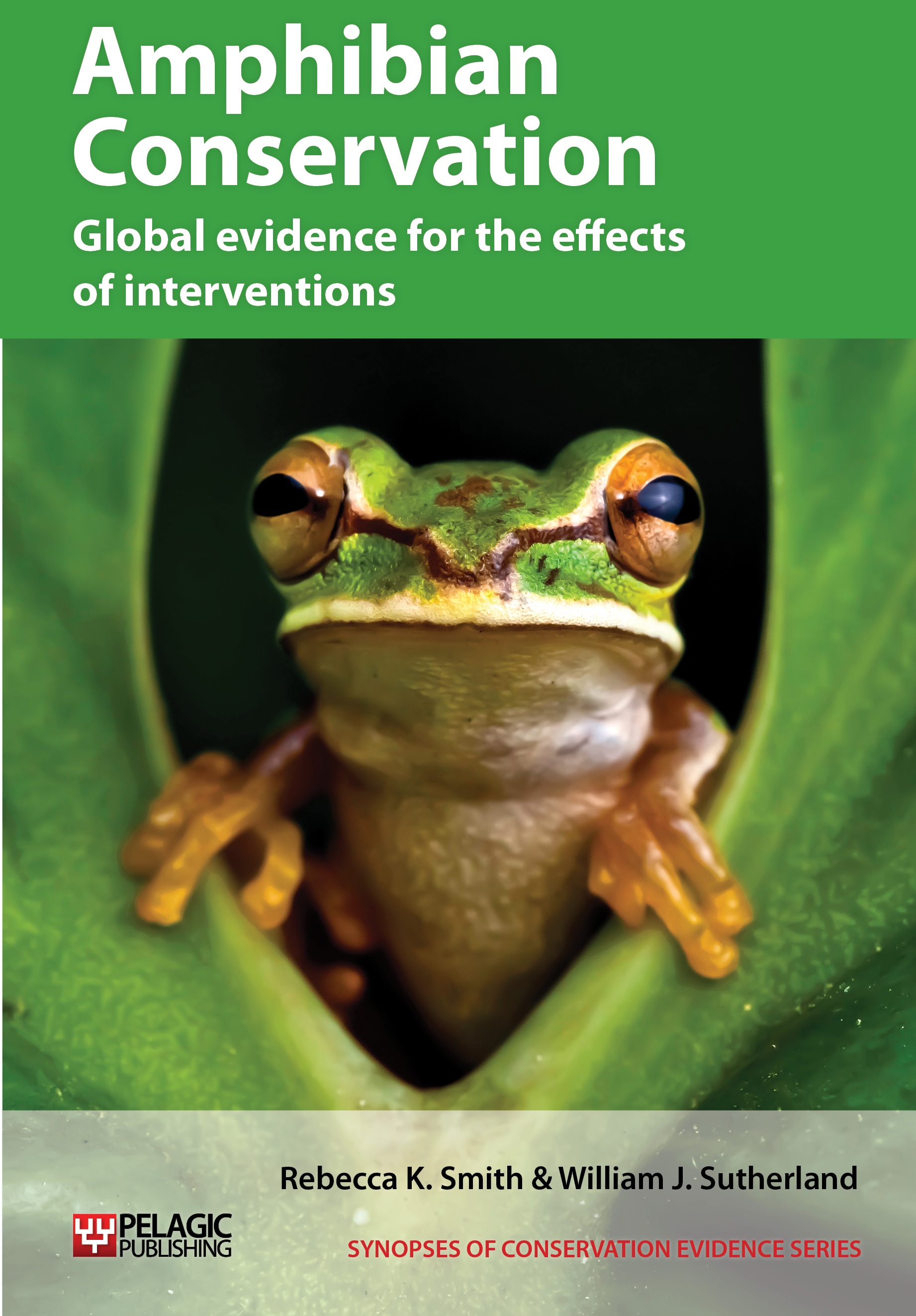Translocate salamanders (including newts)
-
Overall effectiveness category Likely to be beneficial
-
Number of studies: 6
View assessment score
Hide assessment score
How is the evidence assessed?
-
Effectiveness
70% -
Certainty
55% -
Harms
0%
Study locations
Supporting evidence from individual studies
A before-and-after study in 1965–1986 of two created ponds in Missouri, USA (Sexton & Phillips 1986) found that translocating eggs and larvae established breeding populations of spotted salamanders Ambystoma maculatum and ringed salamanders Ambystoma annulatum. A breeding population of spotted salamanders was established in one pond. At the other pond, adult ringed salamanders Ambystoma annulatum were recorded in 1984 and egg masses in 1986. In 1965 and 1968, eggs and larvae of spotted salamanders were translocated to a newly constructed pond. In 1977, eggs of the ringed salamander were translocated to another created pond. Ponds were monitored until 1986.
Study and other actions testedA review in 1991 of amphibian translocation programmes (Reinert 1991) found that three salamander translocations resulted in established breeding populations. In one study, breeding populations of two salamander species were established (Sexton & Phillips 1986). In a second study, a breeding population of tiger salamanders Ambystoma tigrinum established at a created pond, with returning adults and 18–25 egg masses recorded within four years. In 1982–1985, 1,000 tiger salamander eggs were translocated (20 km) annually to the pond (0.2 ha) in New Jersey, USA.
Study and other actions testedA before-and-after study in 1974–1995 in Missouri, USA (Sexton et al. 1998) found that translocated spotted salamander Ambystoma maculatum eggs established a breeding population. Numbers of salamander captures increased from 428 in 1974 to 2,301 in 1995 at the release pond. Salamanders also colonized four other created ponds (0.9–2.4 km). In 1966, spotted salamander egg masses were translocated 1 km to a newly constructed pond. Another six ponds were constructed at the site in 1965–1979. Monitoring was undertaken using drift-fencing with pitfall traps around ponds and by egg mass counts.
Study and other actions testedA replicated, before-and-after study in 1995–2000 of two created ponds in Ohio, USA (Weyrauch & Amon 2002) found that translocated spotted salamanders Ambystoma maculatum, but not tiger salamanders Ambystoma tigrinum, reproduced in created ponds. Four adult spotted salamanders and one egg mass were found in one pond in 1997 and three egg masses in the other pond in 2000. Metamorphs were produced in both ponds in 1996–1998. Tiger salamanders were not recorded following their introduction. Ponds were created in 1995–1997 and were 2–4 m deep. Vegetation, plankton and organic matter (from local wetlands) were added. Spotted salamander eggs (600–1,100), larvae (40–850) and metamorphs (4–33) and tiger salamander metamorphs (0–25) were translocated in spring 1996–1998 and 2000. Monitoring was undertaken using drift-fencing and pitfall traps surrounding ponds, dip-netting and egg counts.
Study and other actions testedA before-and-after study in 2004 of a pond in parkland in Lancashire, UK (Neave & Moffat 2007) found that translocated smooth newts Triturus vulgaris established a breeding population. Newts were translocated to the pond from a nearby building site in 2002 and monitored in spring 2004.
Study and other actions testedA replicated study in 2005–2008 in a restored forested wetland in Lake County, Illinois, USA (Sacerdote 2009) found that translocated spotted salamander Ambystoma maculatum eggs hatched and survived as tadpoles in enclosures in restored ponds. Overall, tadpole survival rates (without effects of pond drying) were similar in restored and donor ponds (15–65 vs 26–81%). Translocated egg masses were placed in two mesh enclosures (56 x 36 x 36 cm) in each of five restored ponds and three enclosures in three donor ponds annually in 2005–2008. Tadpoles were monitored two or three times/week until metamorphosis. Tadpoles were moved if ponds dried.
Study and other actions tested
Where has this evidence come from?
List of journals searched by synopsis
All the journals searched for all synopses
This Action forms part of the Action Synopsis:
Amphibian Conservation
Amphibian Conservation - Published 2014
Amphibian Synopsis





)_2023.JPG)














